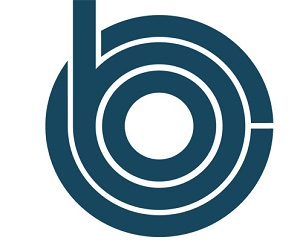
For most Americans, a Friday afternoon in mid-December is a time when work is winding down and holiday plans begin to take center stage. It also seems to be a time, coincidentally or not, for the government to publish reports that run counter to prevailing media narratives. Keeping with tradition, the CBO reported on Friday that the DREAM Act, which would provide amnesty to up to three million illegal immigrants who arrived before the age of 18, would generate a net cost of $26 billion over the next 10 years. Because advocates claim that virtually any loosening of immigration restrictions will benefit taxpayers — even refugees, despite their low earnings and high welfare consumption, are said to be fiscal boons — and because the media have been eager to run with that narrative, the CBO's estimate may come as a surprise.
In truth, however, it's hard to see how the analysis could have come out the other way. Young illegal immigrants — some of whom already have work permits, due to the Obama Administration's DACA program — currently pay most taxes, but cannot receive most federal benefits. Legalization is therefore bound to be costly. Furthermore, as a generally lower-skill population, DREAM Act beneficiaries will use more government services than average. The CBO estimates that the DREAM Act would generate about $1 billion of extra tax revenue from ending "off-the-books" labor, but that gain is swamped by $27 billion in new spending on benefits. The most expensive benefit enjoyed by Dream Act recipients would be Obamacare subsidies ($12 billion), followed by the earned income and child tax credits ($5.5 billion), Medicaid ($5 billion), and food stamps ($2 billion).
In contrast to its findings here, the CBO famously estimated in 2013 that the proposed Schumer-Rubio amnesty would have a positive fiscal impact. Since Schumer-Rubio was a larger version of the DREAM Act, why does the same common-sense analysis — tax receipts stay roughly the same, service costs go up — not apply in both cases? The reasons are complex, but two thoughts come immediately to mind. First, the Schumer-Rubio amnesty required a long provisional period that pushed immigrant eligibility for most benefits beyond the CBO's 10-year budget window. The DREAM Act, by contrast, does not appear to impose an added waiting time. Beneficiaries could immediately receive Obamacare, then receive Medicaid and other services after the normal five-year period for legal immigrants.
Second, Schumer-Rubio was an enormous bill, and provisions for increased high-skill immigration likely helped disguise the impact of amnesty. If the DREAM Act is eventually combined in legislation with separate provisions that add revenue, advocates may still end up touting the supposed fiscal benefits of amnesty! Politicians are certainly not averse to using high-skill immigration as "the spoonful of sugar to help the amnesty medicine go down". For example, when the White House Council of Economic Advisers announced in 2015 that President Obama's executive amnesties would have tremendous economic benefits, the fine print revealed that almost all of the predicted labor-force and GDP growth stemmed from changes to high-skill immigration that had been tacked on to the amnesty order.
In any event, the $26 billion price tag that the CBO has placed on the DREAM Act does come with some caveats. First, the cost excludes impacts on state and local governments. Second, the total is based on only two million immigrants successfully signing up for amnesty out of the roughly three million who are eligible to apply. On one hand, it makes sense to develop cost estimates based on a predicted level of participation rather than an upper bound. On the other hand, it's strange for Congress to pass a broad amnesty while simply assuming for cost purposes that fewer people will participate than are eligible. As Robert Rector has pointed out, if Congress is serious about the CBO's cost estimates, it should cap the number of people eligible for amnesty in order to remove all uncertainty. Of course, the fact that no cap is included in the DREAM Act suggests that its sponsors would be fine with the bill costing even more than the CBO estimates.
Third, the CBO assumed additional costs from DREAM Act beneficiaries sponsoring their parents would be minimal. Since illegal aliens must leave the United States for 10 years before they apply for a green card, the CBO reasons that few parents will benefit from their children receiving amnesty. Unfortunately, as my colleague Jessica Vaughn has explained, the 10-year bar is difficult to enforce without better vetting tools. Parents could simply return home and apply for a green card, denying they had ever been in the United States illegally. Even if each DREAM Act beneficiary sponsors only one additional relative, the cost of the bill could roughly double.
A final caveat is that the CBO's $26 billion figure appears to be based on a status quo counterfactual, meaning the DREAM Act's intended beneficiaries simply go on living illegally in the United States if the bill is not passed. The fiscal impact of these illegal immigrants returning home is a more complex question that the CBO does not attempt to answer.
From a big-picture perspective, fiscal effects are not everything. Immigration has economic, political, social, and cultural impacts that transcend dollars and cents. No CBO report can tell us whether amnesty is definitively good or bad policy, but this latest analysis, buried on a Friday afternoon in December, does remind us that even something cheerfully named the "DREAM Act" is not without costs.
